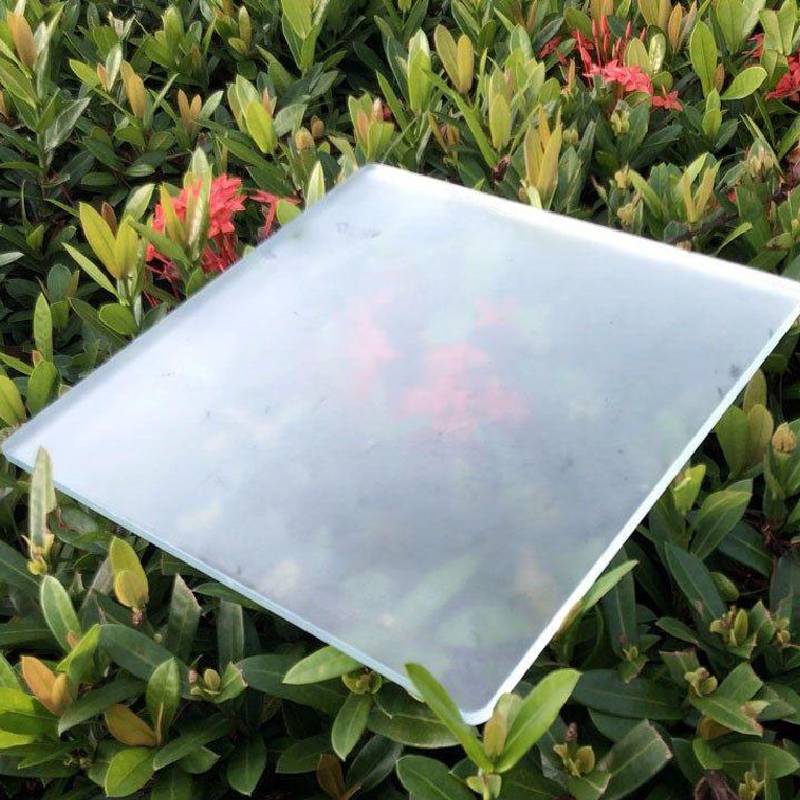Exploring the World of Silver Mirror Manufacturing
The silver mirror, a timeless and elegant reflective surface, has been a staple in homes, businesses, and various industries for centuries. The process of manufacturing silver mirrors involves meticulous attention to detail, advanced technology, and a deep understanding of materials. In this article, we will delve into the intricacies of silver mirror manufacturing, highlighting the key stages involved, technological advancements, and the environmental considerations that manufacturers must keep in mind.
The Manufacturing Process
The journey of creating a silver mirror begins with the selection of high-quality glass. Floating glass, known for its smooth surface and clarity, is the primary choice. The first step in the manufacturing process is to cut the glass into the desired dimensions, followed by cleaning to remove any impurities that could affect the final finish.
After preparing the glass, the next step involves applying a thin layer of silver. This is typically done using a chemical process known as silvering. In this stage, a silver nitrate solution is applied to the glass surface. When exposed to reducing agents, the silver ions are converted into metallic silver, creating a reflective layer. This process requires precision, as uniformity in the silver layer is crucial for achieving a consistent and high-quality reflective surface.
After the silvering process, a protective coating is applied to prevent tarnishing and scratching. The coating, often composed of paint or lacquers, is essential to prolong the mirror's lifespan and maintain its aesthetic appeal. Finally, the mirrored glass undergoes additional quality checks to ensure there are no defects before being packaged and shipped to customers.
Technological Advancements
In recent years, the silver mirror manufacturing industry has embraced technology to enhance production efficiency and product quality. Automation has played a significant role in streamlining processes such as cutting, cleaning, and coating. Technological advancements have also introduced sophisticated quality control systems, including optical inspection tools that can detect flaws in the reflective surface or coating application.
Moreover, advancements in eco-friendly materials and processes are becoming increasingly important. Many manufacturers are exploring sustainable alternatives to traditional silvering methods, including the use of water-based coatings and reducing agents that minimize environmental impact. These innovations not only cater to the growing consumer demand for environmentally responsible products but also help companies reduce their carbon footprint.
silver mirror manufacturer
Market Trends and Consumer Preferences
The demand for silver mirrors spans various sectors, including residential, commercial, and automotive industries. In residential applications, consumers are increasingly favoring customized and decorative mirrors that enhance the space's aesthetic appeal. Interior design trends also dictate the shape, size, and finish of mirrors, driving manufacturers to adapt their offerings accordingly.
Online retailing has transformed the way consumers shop for mirrors. With the convenience of browsing and purchasing from home, manufacturers are leveraging e-commerce platforms to reach a wider audience. Social media also plays a vital role in influencing consumer preferences, with platforms like Instagram and Pinterest showcasing innovative mirror designs and home decor ideas.
Environmental Considerations
As consumer awareness of environmental issues continues to grow, silver mirror manufacturers are under pressure to adopt sustainable practices. This includes sourcing raw materials responsibly, optimizing energy consumption during production, and minimizing waste. Many companies are implementing recycling programs for used mirrors and packaging materials.
Additionally, certifications and eco-labels are becoming essential marketing tools that signal a manufacturer’s commitment to sustainability. By prioritizing eco-friendly practices, manufacturers can attract environmentally conscious consumers while ensuring compliance with regulations and standards.
Conclusion
The silver mirror manufacturing industry is a fascinating blend of tradition and innovation. As manufacturers refine their processes and adapt to changing consumer demands, they are not only enhancing the quality and aesthetic appeal of silver mirrors but also prioritizing sustainability. With continuous advancements in technology and an increasing focus on environmentally responsible practices, the future of silver mirror manufacturing looks promising and poised for growth. Whether in a modern home or a luxurious hotel lobby, silver mirrors continue to reflect beauty, elegance, and functionality.
 Afrikaans
Afrikaans  Albanian
Albanian  Amharic
Amharic  Arabic
Arabic  Armenian
Armenian  Azerbaijani
Azerbaijani  Basque
Basque  Belarusian
Belarusian  Bengali
Bengali  Bosnian
Bosnian  Bulgarian
Bulgarian  Catalan
Catalan  Cebuano
Cebuano  Corsican
Corsican  Croatian
Croatian  Czech
Czech  Danish
Danish  Dutch
Dutch  English
English  Esperanto
Esperanto  Estonian
Estonian  Finnish
Finnish  French
French  Frisian
Frisian  Galician
Galician  Georgian
Georgian  German
German  Greek
Greek  Gujarati
Gujarati  Haitian Creole
Haitian Creole  hausa
hausa  hawaiian
hawaiian  Hebrew
Hebrew  Hindi
Hindi  Miao
Miao  Hungarian
Hungarian  Icelandic
Icelandic  igbo
igbo  Indonesian
Indonesian  irish
irish  Italian
Italian  Japanese
Japanese  Javanese
Javanese  Kannada
Kannada  kazakh
kazakh  Khmer
Khmer  Rwandese
Rwandese  Korean
Korean  Kurdish
Kurdish  Kyrgyz
Kyrgyz  Lao
Lao  Latin
Latin  Latvian
Latvian  Lithuanian
Lithuanian  Luxembourgish
Luxembourgish  Macedonian
Macedonian  Malgashi
Malgashi  Malay
Malay  Malayalam
Malayalam  Maltese
Maltese  Maori
Maori  Marathi
Marathi  Mongolian
Mongolian  Myanmar
Myanmar  Nepali
Nepali  Norwegian
Norwegian  Norwegian
Norwegian  Occitan
Occitan  Pashto
Pashto  Persian
Persian  Polish
Polish  Portuguese
Portuguese  Punjabi
Punjabi  Romanian
Romanian  Russian
Russian  Samoan
Samoan  Scottish Gaelic
Scottish Gaelic  Serbian
Serbian  Sesotho
Sesotho  Shona
Shona  Sindhi
Sindhi  Sinhala
Sinhala  Slovak
Slovak  Slovenian
Slovenian  Somali
Somali  Spanish
Spanish  Sundanese
Sundanese  Swahili
Swahili  Swedish
Swedish  Tagalog
Tagalog  Tajik
Tajik  Tamil
Tamil  Tatar
Tatar  Telugu
Telugu  Thai
Thai  Turkish
Turkish  Turkmen
Turkmen  Ukrainian
Ukrainian  Urdu
Urdu  Uighur
Uighur  Uzbek
Uzbek  Vietnamese
Vietnamese  Welsh
Welsh  Bantu
Bantu  Yiddish
Yiddish  Yoruba
Yoruba  Zulu
Zulu 

